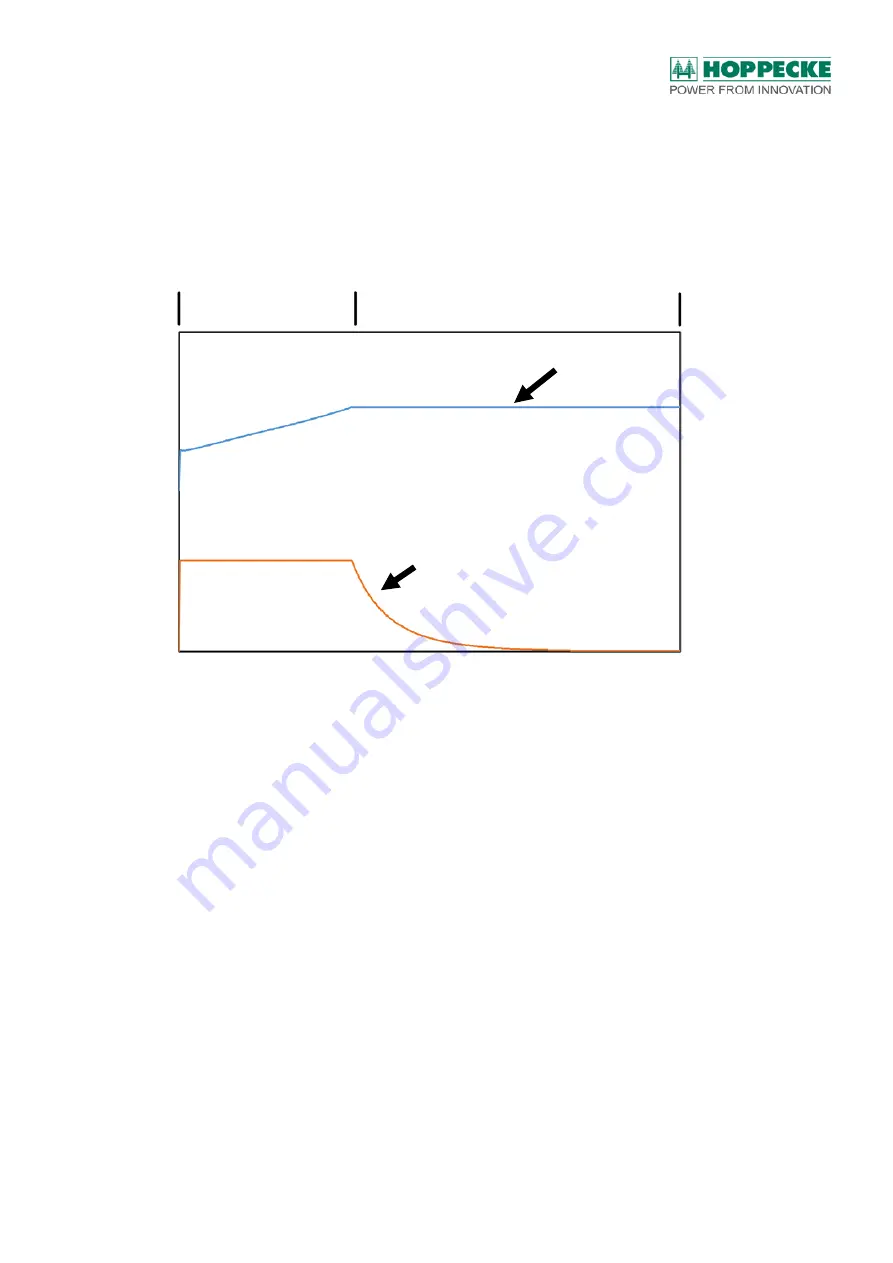
Function and structure
Batteries_Rail_Power_Manual_en02.docx
17
5.3.
Charging methods for rail. power blocks/cells
5.3.1.
Single-stage charging with constant current, constant voltage (IU)
This charging method limits both the current (I) and the voltage (U). At the beginning of
charging, the charging current is limited and the charging voltage rises slowly. When a
defined voltage is reached, it is kept constant by the charger. The current then drops
automatically to a low value.
The setting of the charging voltage always represents a compromise between charging time
and aging. As the current decays when the voltage limit is reached due to the natural
behaviour of the battery, the charging process is slowed down. Although higher voltage
extends the constant current phase and shortens the charging time, ageing is also
accelerated by irreversible water loss (dehydration).
In accordance with the limited charging time in practice, HOPPECKE recommends a
reduced state of charge of approx. 90% of the nominal capacity. For extreme applications
(very high or very low temperatures, cyclical use) this value may be lower.
Constant current
Constant voltage
Voltage
Current
Time






























